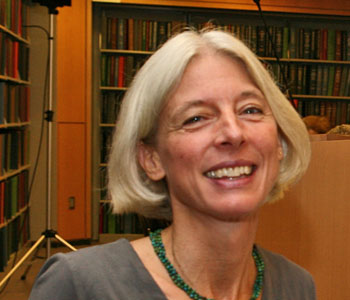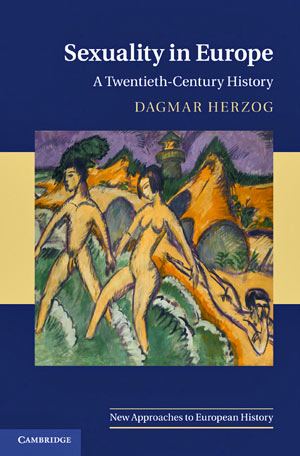
The twentieth century is often called “the century of sex” and seen as an era of increasing liberalization. Indeed, taking the century as a whole, we have seen the erosion of the double standard, the greater acceptance of premarital sex and the eroticization of marriage, the decriminalization and mainstreaming of homosexuality, and the saturation of the public sphere with sexual imagery and talk. Without a doubt, the twentieth century witnessed a vastly intensified preoccupation with sexual matters. But this standard paradigm of liberalization conceals another huge story.
Three issues are especially important to keep in mind. The first has to do with the grassroots appeal of sexual conservatism, the recurrent backlashes against liberalization. Some of the most significant aspects of sexual rights, including access to contraception, or freedom from persecution for homosexual sex, were for extended periods extraordinarily fragile. The backlashes were sometimes coordinated at the state level—think of National Socialism in Germany and Austria, fascism in Italy, Spain, or Portugal, or Stalinism in the Soviet Union. But they were also often carried by popular movements from below.
A second matter is just as essential, and it has to do with the problems often embedded also within what were thought to be liberalizing efforts. In some cases, we can look back and see what contemporaries could not, or did not care to, see—for example, the horrifically disdainful discrimination against the disabled and against people of color in many lands that was used for much of the twentieth century to justify the promotion of contraceptives. In other cases, we ourselves today remain challenged to make sense of such matters as the increasing commercialization of sex. And in yet other cases—for example over the connections between sex and love, or the lack thereof—the disputes over how best to organize sexual politics remain ongoing.
And third, there is the related matter of ambivalences. Sex does not always make people happy. Quite apart from the recurring dark sides of sexuality in the form of rape, abuse, exploitation, hurt, and harassment—which also have their important histories, both with regard to what human beings have done to each other but also with respect to the campaigns fought against such pain and against the conditions that facilitate it—also sex that was mutually willed could be the site of many conflicting feelings: explosive, transformative ecstasy, delight, and excitement; serene security, satisfaction, status confirmation, the pleasures of conformity to norms; anguished longing, vulnerability, insecurity, jealousy; or habit, duty, boredom, even repulsion.
These emotions matter. It is not least because sex is complicated that human beings are so politically and socially manipulable in this area—although historians have too rarely reflected openly on this complicatedness when trying to explain how sexual cultures change. My aim in the book was, first, to reconstruct the extraordinarily varied ways people in the past imagined sex and, second, to analyze how activists of all stripes battled over the ethics of sex, and struggled to change laws, attitudes, and practices.
The book arcs from the waning of Victorianism to the collapse of Communism and the rise of European Islam. Throughout, it investigates the shifting fortunes of prostitution and marriage, of pornography and disease, of contraception and abortion, and of queer and straight existence. It analyzes sexual violence in war and peace, the promotion of sexual satisfaction in both fascist and democratic societies, the role of eugenics and disability, the politicization and marketing of sex, and processes of secularization and religious renewal.
But my major obsession was different: I wanted to use the tools of both comparative and transnational history, with the case study of sex, to answer those classic historians’ questions about causation, periodization, and interpretation. I was originally trained as a historian of Germany—here was my chance to explore developments in 25 countries and over 100 years. So the organizing puzzles had to do with what combination of factors help to shift sexual cultures in either more liberal-progressive or more neotraditionalist-restrictive directions.
After all, what is it that drives historical change in this realm that is at once so intimate and personal and so publicly scrutinized? Is it primarily (as many have presumed) economic forces and technological advances? Or is it something as seemingly mundane as the party-political balance of power within national governments? Do shifting popular values lead to pressure for legal change, or is it the opposite? How important are individual activists or social movements? What is the role of religious teachings, of colonial encounters, of generational changes, of wars and military occupations?
The answers to these questions are relevant for all historians. What I discovered is that causation really was different in each historical circumstance. I was especially interested in the effects of scandals (they can often do more overnight than years of organizing), as well as in the impact of mass violence and its aftermath. But I was also especially interested in the interconnections between sexual and other kinds of politics.
I have had the privilege of teaching history of sexuality, from the eighteenth century to the present, in Europe and the United States, for the last twenty years, at both the undergraduate and graduate levels, always using both secondary scholarship and primary documents. I learned an enormous amount from my students. So much of this book is my attempt to give back to them. At every point, I tried to bring into view what they had most been amazed by in delving into the difference of the past.
Readers have riveted onto different things. Some are most struck by the world of one hundred years ago, which I try to recreate in the first chapter. How prostitution was everywhere the open-secret supplement to marriage, how prostitutes were considered far more sexually exciting than wives, and how much effort it took to eroticize marriage. Or how abortion was once considered far less immoral than contraception. Or how incompletely the categories of homo- and heterosexuality had been disentangled.
Others are drawn most strongly to the chapter on sexual violence in World War II and the Holocaust. They are interested in how the Nazis, far from being generally sexually repressive, were actually wildly pro-sex for the majority of the population (nondisabled, heterosexual “Aryans”)—upsetting the Christian churches profoundly—and yet also managed to associate Jewishness with “dirty” sex. And they are concerned to understand the sexual abuse and humiliation of victims within the concentration and death camps, whether in the context of pseudoscientific “reproductive” experiments or just sheer sadism among the guards. It is difficult but important to grasp this hideous combination of disinhibition and incitement with cruelty and horror—not least because it explains a great deal about the turn to conservatism after the war.
The chapter I like best is about the sexual revolution of the 1960s to 1970s. In some ways, it’s the time period people feel they know best, but here too there are so many surprises. For example, the standard story we are now often told is that women were the losers of the revolution, nothing but sexual objects for commitment-phobic men. But actually it turns out that there were many men who had deep ambivalence about sexual freedom for women. I am also moved by the anguished disappointment of the activists of the Make Love Not War generation when it turned out that the consumer capitalism they reviled was a major factor in the liberalization of sexual mores they had been fighting for. And it is important to remember that discomfort with sexual liberties, and male annoyance at women’s demands for better heterosexual sex, were two key factors in what would become a renewed turn toward sexual conservatism. Although the forms in which disappointments were expressed were still rather inchoate, a backlash against the sexual revolution was already building—before anyone had ever even heard of the disease that would eventually be called HIV/AIDS.
I am lucky that I was able to take a couple of extra years to collect materials for this book on twentieth-century Europe while I was writing a previous one about the sexual politics of the Religious Right in the United States. This did two things: It allowed me to make use of remarkable new material just emerging on the countries of the former “Eastern bloc,” so that the story is not just a Western one—and it makes us see the West in a totally different light. Second, working on the recent past in the U.S. helped me think about the extraordinarily intimate levels at which cultural retrenchment works. So Sexuality in Europe really can be thought of as part of the new “emotional turn” in cultural history. That’s not just because the book emphasizes the complexity of emotions brought to the topic and practice of sex—the yearnings, anxieties, and envies as well as the joys and delights. The aim was to help readers understand better things that are usually so confusing: from the disappointments as well as the electric excitements felt in the midst of the sexual revolution to the unexpected but wonderful recent return of romance in the midst of the ever-growing commercialization of sex in the era of Viagra, vibrators, and the Internet.
Throughout, I was especially concerned with unanticipated and/or paradoxical twists, for instance the at first appallingly ugly but then inventive and creative responses to HIV/AIDS, or the unprecedented reorientation of traditional sexual conservatives to a prohomosexual stance once they were faced with the ascent of neofundamentalism within some strands of European Islam, but also the alarming new trend in which the so infinitely precious and hard-won achievements of disability rights activists are abruptly being turned against women’s rights to reproductive self-determination.
Consent and self-determination are the moral bedrock of sexual ethics, and opponents of these values are incredibly clever. But above all, I think that ethical debate needs historical awareness.
The book demonstrates the tremendous historical changeability of notions not only of sexual preference and identity but also of the very nature of desire and happiness. What was immoral or repugnant, what was thrilling or satisfying, varied enormously across time and space—understanding this offers fresh vantage points on the dilemmas of the present juncture as well.


Dagmar Herzog is Professor of History and the Daniel Rose Faculty Scholar at the Graduate Center, City University of New York. She has published widely in the history of religion in Europe and the United States, on the Holocaust and its aftermath, and on the histories of gender and sexuality. She is a member of the Board of Editors for the American Historical Review, and is currently at work on a new project on the European and American histories of psychoanalysis, trauma, and desire, a project for which she has been awarded a fellowship from the John Simon Guggenheim Memorial Foundation.